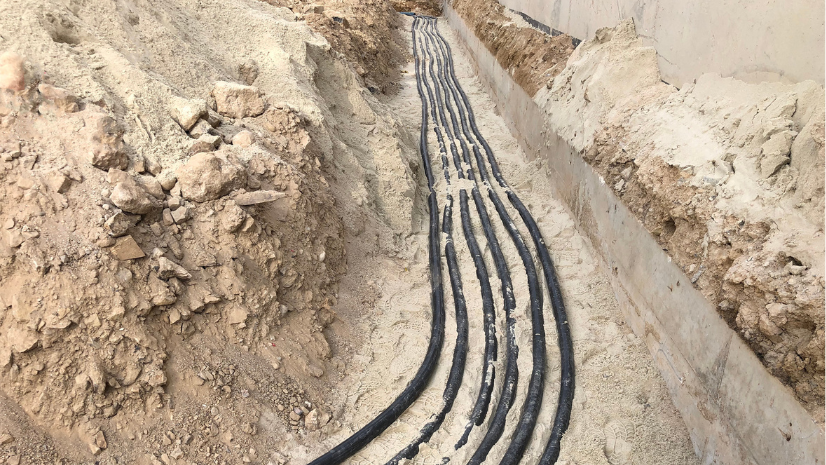Established in 1929, Conway Corp operates a city-owned utility, providing essential services to more than 30,000 customers in Conway, Arkansas. Its mission is to exceed customer expectations by producing and delivering safe, affordable, reliable, innovative, and environmentally sound electric, water, wastewater, video, internet, and voice services, focusing on reliability, sustainability, and local investment.
Geographic information system (GIS) technology is vital in managing infrastructure, optimizing operations, and enhancing customer service efficiently. Conway Corp has used Esri’s products for more than two decades, integrating GIS into multiple facets of its business, including asset management, outage response, system planning, and customer service. With GIS embedded across operations—from mobile work to outage response—the organization is now positioned for future growth and digital transformation.
Background
Conway Corp had built a robust GIS foundation over two decades, starting with ArcInfo 7.0 in 1999, and evolving into a central system of record for electric, water, and wastewater services. Over time, the utility implemented geometric networks and custom mobile applications for each of its domains. Still, by 2022, it faced a clear inflection point: Esri was sunsetting ArcMap and the geometric network, and continued reliance on this architecture limited the expanded use of GIS within Conway Corp.

Conway Corp began capturing data for its GIS in the early 2000s.
Operational teams needed better mobile tools like offline maps and real-time tracing, while IT had to maintain connectivity with third-party systems tightly coupled to geometric network technology. Upgrading wasn’t just about keeping current—it meant safeguarding the stability of daily operations across electric and water infrastructure, and ensuring that mission-critical systems like supervisory control and data acquisition (SCADA), advanced metering infrastructure (AMI), and outage management system (OMS) wouldn’t break during the transition.
“We knew our current setup was on borrowed time. Moving to the Utility Network wasn’t optional—it was essential. But we had to do it without disrupting the systems everyone depends on.” —James Rains, GIS Coordinator, Conway Corp.
Building On a Successful Outage Management Process
Visualizing outages with the geometric network was a significant asset to its manual processes. To credit, our electric department knew its system well. Adding network mapping gave a visual representation of the outage on a map. GIS assisted by locating known devices and customer call tickets through manual tracing. It also helped by getting a more accurate total of affected customers for reporting purposes.

The former method involved manual tracing based on customer calls and paper tickets.
With the addition of AMI in 2017, Conway Corp’s decade-long struggle to provide somewhat “live” outage data was about to pay off. This technology allowed Conway Corp to add an OMS extension to its current engineering modeling software. Integrating with ArcGIS Utility Network will provide a full digital transformation to the restoration process.
Migration to ArcGIS Utility Network
In late 2022, Conway Corp launched its ArcGIS Utility Network migration initiative by partnering with longtime collaborator Gregg Noland of FenuxLabs. The GIS team, supported by IT and operations, began a structured transition from the geometric network architecture to Esri’s ArcGIS Utility Network.

ArcGIS Utility Network provides Conway Corp with a modern network information system.
FenuxLabs’ tools handled the migration algorithmically, scanning Conway Corp’s electric, water, and wastewater datasets for geometry and attribute issues. Data errors were corrected automatically, which dramatically reduced the manual workload. Key Utility Network components, such as tiers, terminal configurations, and trace rules, were developed with Conway Corp’s engineers.
ArcGIS Pro was used to build and publish services, while ArcGIS Enterprise portal, integrated with Okta Single Sign-On, streamlined access across departments. A beta Utility Network was deployed to a test environment running ArcGIS Enterprise, ensuring stability before production rollout.
“ArcGIS Utility Network gave us a model that could grow with us—one that not only modernized how we map and trace but future-proofed our entire GIS strategy.” —Brandon Land, Senior Systems Analyst, Conway Corp.
Results
By mid-2024, Conway Corp successfully converted its electric, water, and wastewater systems into ArcGIS Utility Network datasets, completing core migration milestones and launching a new phase of GIS-supported operations.
- Over 95 percent of data inconsistencies were corrected through automated QA/QC processes.
- A new “dual network” model enables continued support for legacy integrations via regenerated geometric networks.
- Once mobile maps custom applications are fully integrated with ArcGIS Utility Network, mobile crews will be equipped to directly perform electric and water tracing from the map, increasing responsiveness during outages and routine maintenance.

Dashboards improve transparency and speed up internal reporting.
“We no longer rely on paper-based workflows or ad hoc data tracing. GIS is now truly integrated into how we work—fast, connected, and visual.” —Chris Boudreaux, Operations Systems Coordinator, Conway Corp.
Partner Provides Support
FenuxLabs, led by Gregg Noland, played a central role in Conway Corp’s migration to ArcGIS Utility Network. Using deep familiarity with the utility’s legacy systems and GIS architecture, FenuxLabs developed custom tools to automate data validation, correct topology issues, and generate ArcGIS Utility Network and fallback geometric network environments. Its expertise has allowed Conway Corp to accelerate migration timelines and reduce disruption across engineering and operations teams.
The Value of the Migration
With ArcGIS Utility Network now in place, Conway Corp is realizing transformative improvements:
- In the future, mobile staff can trace electric circuits and isolate water valves directly from mobile devices.
- Real-time, GIS-driven outage response supports faster restoration and better customer communication.
- GIS dashboards centralize insights, boosting interdepartmental collaboration and planning.
- This move lays the foundation for digital twin development and smarter asset investment.
The migration to ArcGIS Utility Network also enables Conway Corp to maintain operational continuity with existing software while preparing for future tech upgrades.
“This project wasn’t just about compliance or catching up—it’s about being ready for whatever comes next. We’ve taken the first step into the future.” —James Rains, GIS Coordinator, Conway Corp.
Looking Ahead
Conway Corp is actively working to build out new capabilities in its ArcGIS Utility Network framework:
- Integrating ArcGIS Utility Network data into the IT department’s custom mobile maps application to provide native mobile tracing capabilities.
- All existing web services and ArcGIS applications will be migrated into the latest ArcGIS environment.
- Enhancing real-time mobile decision-making by incorporating live sensor feeds and SCADA integration.
- Exploring predictive analytics and outage forecasting through Esri and partner-based AI/ML tools.
“Our web-based GIS has improved our operations across the board and inspired a culture of digital transformation to the benefit of real-time data. From engineers to field techs, everyone benefits from seeing the full picture of our assets.” —Brett McDaniel, Chief Operating Officer, Conway Corp.

